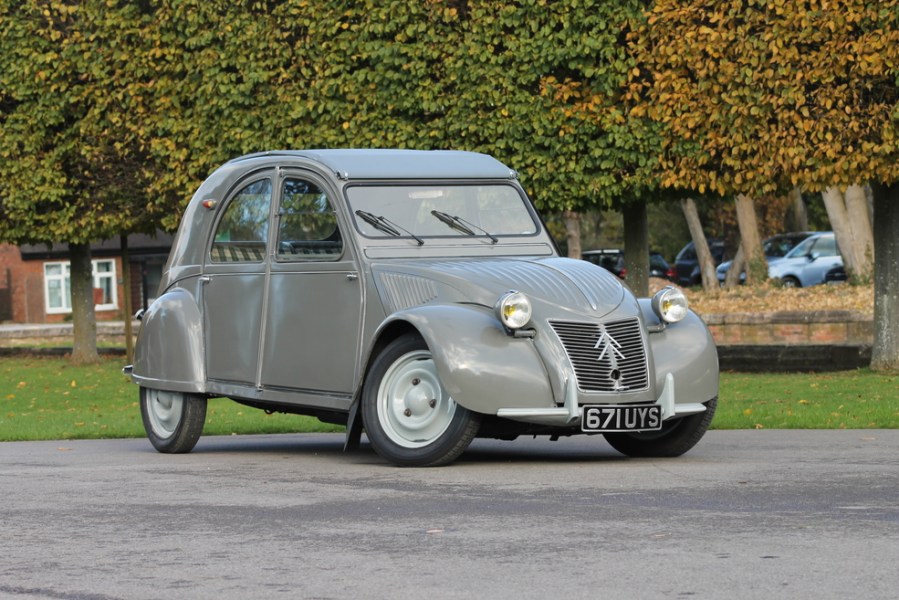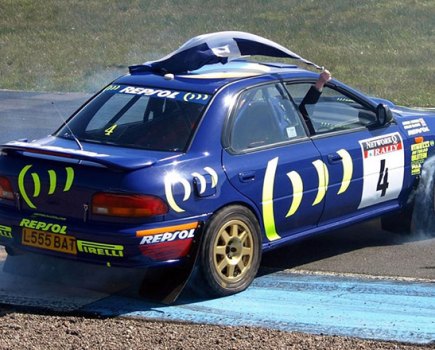For a long time there was only one way to make an economical car, which was to make it as light as possible. We look at cars which tried to go far on very little.
These days it is very hard to buy a car that doesn’t impress with how much it can do on so little fuel. For both financial and ecological reasons motorists have rarely been more interested in getting the most out of every splash of petrol, while regulations, standardised tests, tax structures and long-term business interests make it a commercial imperative for car makers as well. Modern engines can extract power from fossil fuels with an efficiency that would make Rudolf Diesel drool. These days you can buy a Ford Focus (the size of an original Granada) with a sub-one-litre engine (a size most of us with more classically-orientated minds would consider small even for something the size of a 105E Anglia) which can produce 123bhp (more than the 2.5-litre V6 available in the Granada), which can do 120mph and can sip fuel at the rate of almost 60 miles to every gallon. And that’s an entirely average, cheap-and-cheerful family hatchback. It’s possible to buy cars which can achieve over 100mpg on the official test cycle. At the other extreme even ‘thirsty’ cars aren’t in the same league as an old Range Rover or a V12 Jaguar. These days a V8 Range Rover with 334bhp on tap can also achieve 32 miles per gallon while even the 592bhp BMW M5 has a touring economy in the 30s.
Of course all this has been achieved by some brilliant, advanced and very complicated technology which wasn’t available even ten years ago, let alone to the slide-rule wielding, pencil-scribbling draftsmen of the classic era. That pint-sized powerhouse in the Focus achieves its remarkable power courtesy of a turbocharger which spins at up to 250,000 rpm! In the past it simply wasn’t possible to square the circle of ‘power equals performance equals consumption’.

SMALL WONDERS
The two factors which literally work against the inherent economy of any car are its weight and its aerodynamic drag. A weighty car needs more power to accelerate at a given rate (or shift its bulk up hills) while a draggy car demands more power (and thus more fuel) to maintain a given speed. This has been known since the earliest days of the car – the famous Peugeot Baby cars, built between 1904 and 1916 and engineered by none other than Ettore Bugatti, where kept as tiny as possible – the original was just under nine feet long and weighed only 350kg, which meant it could be put-putted along by a 652cc engine and still do over 40 miles per gallon. The downside was that its cruising speed was somewhere below 30 miles per hour! This remained the intrinsic problem for decades; that small, low-powered cars couldn’t go very fast. The Austin Seven for instance, with its 747cc engine, burned fuel at around 35 miles per gallon but struggled to exceed 30mph when all of its four seats were occupied. Not that many Seven buyers cared – for them the alternative was the train, the bus or a motorcycle and sidecar. And for most drivers in the 1920s and 1930s the roads of the time weren’t conducive to travelling much faster in any case.
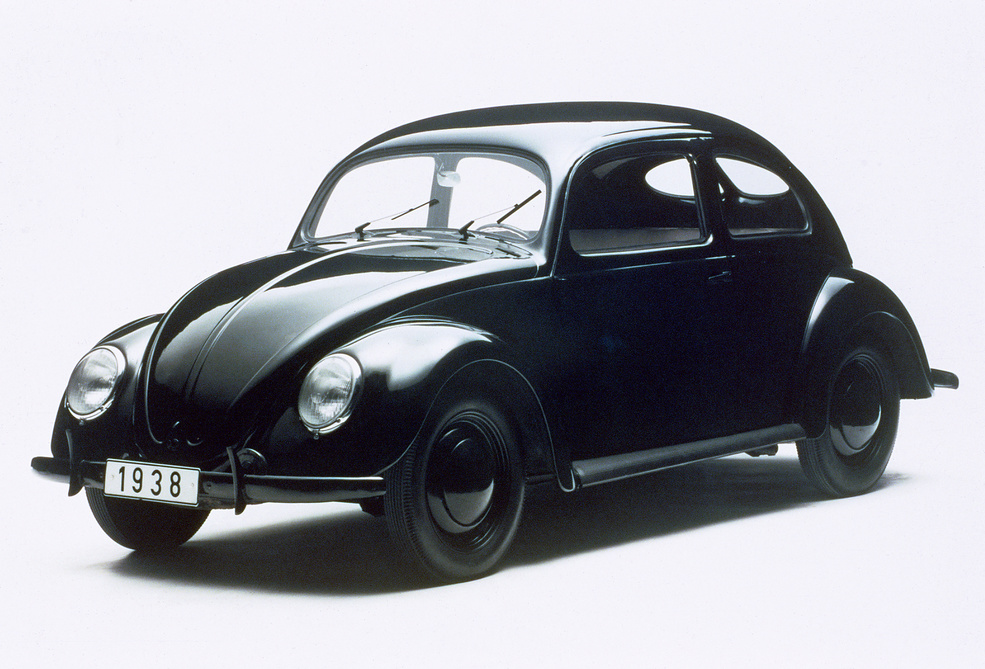
It’s therefore no real surprise that the first real efforts to design a truly economical car came from the first nations in Europe to construct intercity motorways where cars could be expected to travel at high speeds for long periods of time. The first Italian ‘autostrada’ opened in 1926 while Germany built its first ‘autobahn’ in 1935. Both nations also promoted the idea of an economical, affordable small car for its citizens to drive on these new roads. The Fiat 500 Topolino was the first of the new breed of European ‘people’s cars’ and was introduced in 1936. It was the first project for Dante Giacosa, recently transferred from Fiat’s aircraft division. Giacosa approached the idea of a small car from first principles and also employed some aeronautical thinking. The Topolino’s chassis frame had circles drilled out of it to reduce its weight while the radiator was fitted behind the 569cc front-mounted engine, allowing the nose to be raked back to reduce drag. The styling was provided by Rudolfo Schaffer and had been tested in a wind tunnel to make it as slippery as possible while also being as strong as it could be for minimal weight. In ready-to-run trim the Topolino weighed just 520kg and could travel at 50mph while consuming petrol at only slightly more than one gallon per hour at that speed.

WEIGHT WATCHERS
In Germany Ferdinand Porsche was also taking things to first principles for his people’s car. Porsche’s brief from Adolf Hitler included the need for the car to transport a family of five at a constant 60mph while also doing 40mpg. At those speeds the aerodynamic of the car became crucial to reduce the effort needed to push it along, leading Porsche to the distinctive rear-engined layout which allowed him to take the slippery, low-nose look of Giacosa’s Topolino to an even greater extreme – the entire car was formed into an aerodynamically perfect teardrop. Underneath the Volkswagen’s smooth carapace a simple one-piece floor pressing kept the structure as light and simple as possible which meant the car weighed under 750kg.
Even more extreme ideas for weight-saving were being brewed up in France. Citroën had a different concept for an economy car – instead of being built to usher in a world of high-speed intercity travel, theirs would be designed to fit into the existing French countryside. Citroën manager Pierre-Jules Boulanger had laid down a specification which was, in its own way, just as challenging as anything grapple with by Giacosa or Porsche. The Citroën 2CV (at it became) was not expected to exceed 30mph, so aerodynamics hardly mattered, but it had to be incredibly cheap to run – 90 miles per gallon at 30mph was the target laid down by Boulanger. To achieve the incredible economy required, even from the 375cc nine-horsepower engine developed for the car, it would have to be very light. The engineer in charge was André Lefèbvre and like Giacosa his training was in aircraft, which showed in the 2CV’s body structure of single-sheet panels, ribbed for extra strength and hung on a tubular steel frame. The materials were also of an aeronautical bent – the body was to be made from aluminum alloy and the chassis (with drilled holes to reduce its weight, as on the Topolino) was an exotic magnesium blend. The windows were Perspex and the windscreen was mica. In the event the 2CV’s launch was overtaken by the outbreak of the Second World War. When peace returned those materials were in short supply and made the entire design uneconomical so it was redrawn to use thin-gauge steel. This meant that the weight of the car went up from the 380kg of the prototype to the 510kg of the original production version, while the fuel consumption was ‘only’ 58 miles per gallon. None the less the 2CV become the definitive economy car of post-war Europe. Even as its engines grew in size and its top speed increased (from the original 42mph to a breakneck 71.5 by 1970!) the 2CV could still return well over 40mpg even when driven hard.
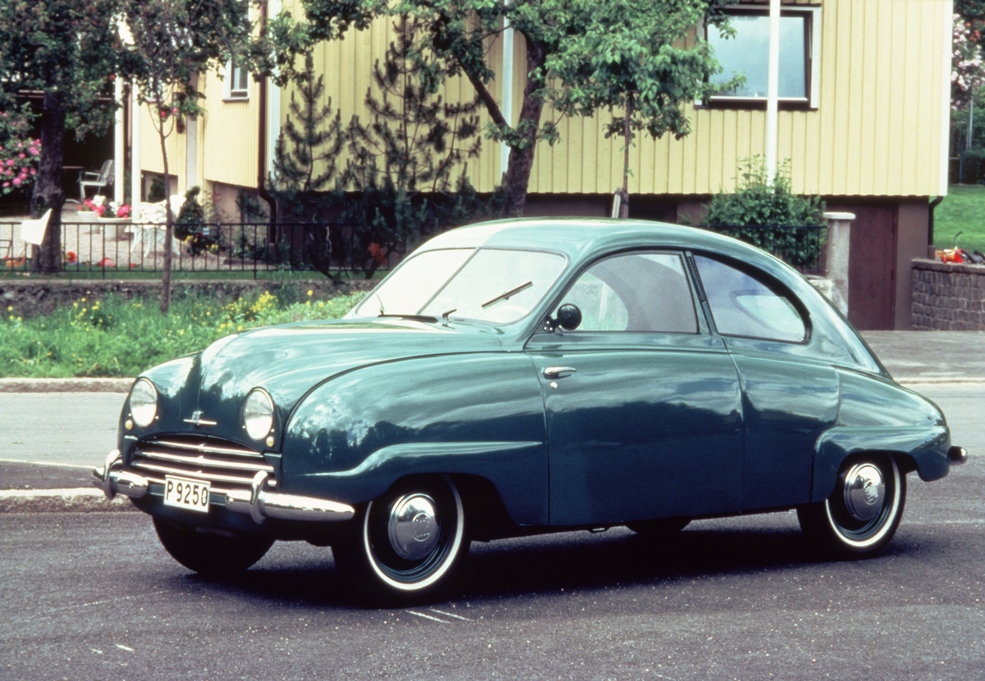
WIND CHEATERS
With economy cars required low weight and low drag it’s not surprising that aircraft makers were so commonly involved with their production. Swedish plane-maker Saab turned its expertise to cars in 1949 with the small, raindrop-shaped 92. The 13-feet long Saab weighed just 760kg and could reach 65mph courtesy of a 25 horsepower two-cylinder two-stroke engine, although fuel consumption struggled to exceed 40mpg. In Germany DKW, with a long history of minimalist two-stroke-powered economy cars, followed Saab’s lead by clothing its existing designs in smooth, swooping bodies.
The 1950s saw interest in economy for cars take something a back seat. Fuel prices were at an all-time low and, after the austere post-war and Depression years wages in the West were growing fast. People were more concerned with style, practicality, speed and comfort than outright economy, while the spread of unitary construction (lighter than the old body-on-chassis method) and overhead valve engines (more efficient and refined than the traditional sidevalve) meant that buyers favoured more ordinary cars once again. For those who wanted or needed utmost economy, the likes of the Beetle, the Fiat 500 (renewed by Giacosa into the even smaller, lighter, more hyper-efficient rear-engined Cinquecento city car in 1957) and the 2CV were there. Some designers still cared about aerodynamics. André Lefèbvre adapted both engineering and styling from the aeronautic industry in 1955 for the futuristic Citroën DS, which boasted a wind-cheating teardrop shape on a larger scale than anything seen before, including a ‘hidden’ radiator air intake under the front bumper. The DS showed that even a large car not really intended for economy could benefit from an aerodynamic shape – despite using a pre-war engine design of only 75bhp the DS could cruise at over 80mph and even the fuel consumption of 25mpg was considered good for a car of its size.
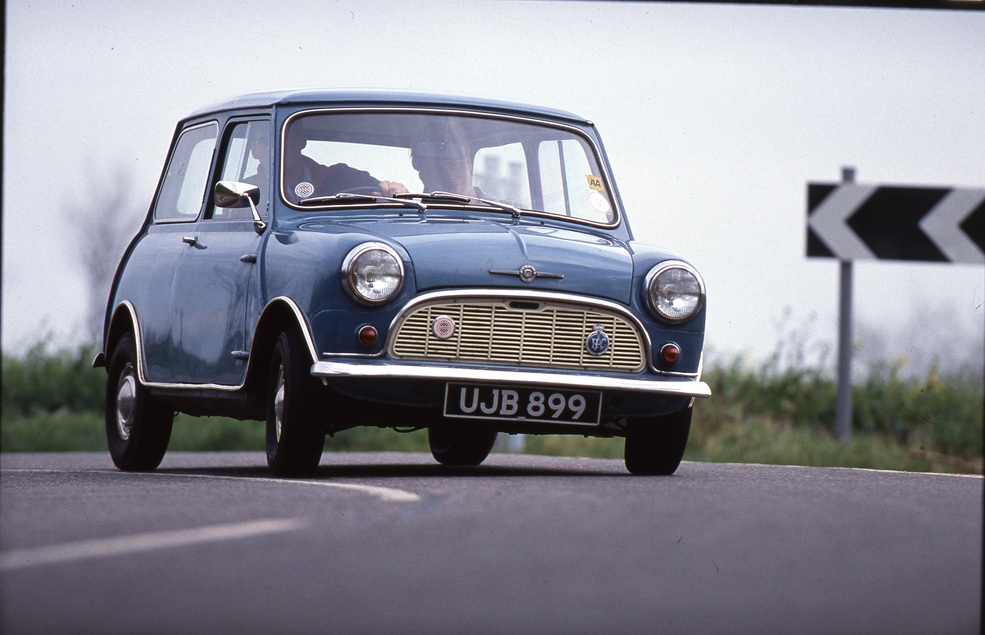
MODERN MARVELS
Later in the decade Alec Issigonis would obsess over keeping weight down with his Mini design. Aerodynamics were not so important with a car intended mostly for urban use, but many of the iconic features of the Mini were adopted to save weight and get the most out of the 848cc engine. Rounding the body panels meant they could be self-supporting while also thin, as well as creating more interior space, resulting in the car’s endearingly dumpy styling. The sliding windows were a weight-saving feature, as were the original ‘pull-cord’ door latches. Many of the Mini’s parts were designed to perform double-duty to get the most of every ounce of weight – the famous door storage bins were originally introduced to brace the single-skin door panels. The external bonnet catch saved the weight of a cable running to the inside while exterior door hinges worked out slightly lighter than the equivalent hidden items. The result was that the Mini could keep up with traffic on the new motorways while also returning 50mpg when not worked quite so hard. Of course the car’s minimal weight (604kg) also played a big part in its famously nimble handling and proved an excellent basis for more sporting variants in the future.
In the 1960s more technology began to be available to produce cars that were both economical and relatively spritely and mainstream makers began to adopt ideas of the economy pioneers without taking them to the same extreme. The Rover P6 and the NSU Ro80 both used aerodynamic principles – a low nose, smooth sides, an arched roof and a short, tapering tail – but without going to the full unconventional teardrop shape of the Saab, Beetle or DS. Both also had forward-looking engine designs, although the Rover’s short-stroke overhead cam engine would prove far more practical than the NSU’s rotary. Other manufacturers were learning how to shave weight from conventional cars, so the likes of the Ford Escort and Vauxhall Viva could tip the scale at around 770kg and clip along at the motorway speed limit while still returning fuel consumption in the 30s.

There were still those which dabbled in extreme economy. Citroën stated true to form with the ultra-slippery little GS and Alfa Romeo brought a new level of sophistication to the small family car market with the Alfasud. Both used flat-four engines and front-wheel drive to produce a low nose and had spacious two-box bodies shaped aerodynamically. Despite having engines of under 1.2-litres in size both could reach 90mph and both had cruising economy in the 40s, while also offering a level of engineering sophistication far ahead of the basic and hyper-focussed economy cars of 20 years previously. The introduction of new engine technology such as turbocharging and fuel injection in the late 1970s laid the groundwork for the modern era of high-tech economy solutions which finally ended the compromise of economy and performance. The 1980s saw aerodynamic, fuel-efficient cars reach the mainstream with the likes of the Ford Sierra and Audi 100.

